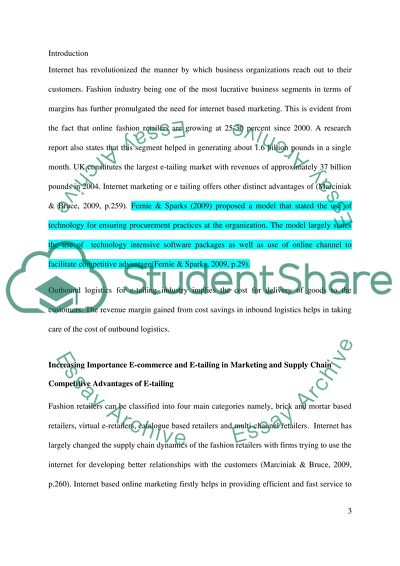Cite this document
(“Business Advantage from E-Commerce in Fashion Industry Essay - 1”, n.d.)
Business Advantage from E-Commerce in Fashion Industry Essay - 1. Retrieved from https://studentshare.org/e-commerce/1576738-how-e-commercee-tailing-affects-the-marketing-and-supply-chain-management-in-fashion-industry
Business Advantage from E-Commerce in Fashion Industry Essay - 1. Retrieved from https://studentshare.org/e-commerce/1576738-how-e-commercee-tailing-affects-the-marketing-and-supply-chain-management-in-fashion-industry
(Business Advantage from E-Commerce in Fashion Industry Essay - 1)
Business Advantage from E-Commerce in Fashion Industry Essay - 1. https://studentshare.org/e-commerce/1576738-how-e-commercee-tailing-affects-the-marketing-and-supply-chain-management-in-fashion-industry.
Business Advantage from E-Commerce in Fashion Industry Essay - 1. https://studentshare.org/e-commerce/1576738-how-e-commercee-tailing-affects-the-marketing-and-supply-chain-management-in-fashion-industry.
“Business Advantage from E-Commerce in Fashion Industry Essay - 1”, n.d. https://studentshare.org/e-commerce/1576738-how-e-commercee-tailing-affects-the-marketing-and-supply-chain-management-in-fashion-industry.


